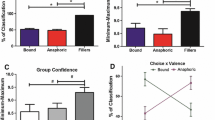Abstract
This paper proposes a methodfor anaphora resolution ofzero subjects in Japaneseinstruction manuals based onboth the linguistic nature ofexpressions and the generalontology of the text type.In instruction manuals writtenin Japanese, zero subject isone of main reasons forambiguity of sentences.In order to resolve them,we examined the property ofseveral types of expressionsincluding some forms of verbalphrases and some conjunctive clauses.As a result, we have aset of constraints and defaultsfor zero subject resolution.We verified the precision and recall rateof the constraints and defaults with realexamples, and have found that they makequite good estimates with 97% precisionand 80% recall.
Similar content being viewed by others
References
Abe, N., T. Ishikawa and T. Saburo: 1988, ‘Kumitate setsumei-bun kara-no kumitate-tejun-no seisei’ [Generating an Assembly Procedure from Assembly Instruction], Jinkō Chihō Gakkai Kaishi, Journal of the Japanese Society for Artificial Intelligence 3, 590-598.
Brennan, S. E., M. W. Friedman and C. J. Pollard: 1987, ‘A Centering Approach to Pronouns’, 25th Annual Meeting of the American Association of Computational Linguistics, Stanford, CA, pp. 155-162.
Dōsaka, K.: 1994, ‘Goyōron-teki jōken-no kaishaku-ni motodzuku nihongo zero-daimeishi-no shiji-taishō-dōtei’ [Identifying the Referents of Japanese Zero Pronouns Based on Pragmatic Condition Interpretation], Jōhō Shori Gakkai Ronbunshi 35, 768-778.
Eugenio, B. D.: 1992, ‘Understanding Natural Language Instructions: The Case of Purpose Clause’, 30th Annual Meeting of the Association for Computational Linguistics, Newark, Del., pp. 120-127.
IPAL: 1987, ‘Keisanki-yō nihongo kihon dōshi jisho IPAL’ [Lexicon of Japanese Basic Verbs for Computers], Information Technology Promotion Agency (IPA), Japan.
Kaiho, H., T. Kato, K. Hori and E. Harada: 1987, Yūzā yomite-no kokoro-o tsukamu manyuaru-no kaki-kata [How to Write Instruction Manuals to Help Users], Tōkyō, Kyōritsu Shuppan.
Kameyama, M.: 1988, ‘Japanese Zero Pronominal Binding: Where Syntax and Discourse Meet’, in W. Poser (ed.), Japanese Syntax, CSLI, Stanford, CA, pp. 351-369.
Kameyama, M.: 1995, ‘The Syntax and Semantics of the Japanese Language Engine’, in R. Mazuka and N. Nagai (eds), Japanese Syntactic Processing, Mahwah, NJ, Lawrence Erlbaum Associates, pp. 153-176.
Masuoka, T. (ed.): 1993, Nihongo-no Joken-Hyogen [Conditional Expressions in Japanese], Tōkyō, Kuroshio Shuppan.
Matsumoto, Y., S. Kurohashi, and M. Nagao: 1996, Nihongo keitaiso kaiseki shisutemu JUMAN shiyō setsumeisho baashon 1.0 [Japanese Morphological Analysis System JUMAN Manual Version 1.0], Kyoto University, Japan.
Mori, T. and H. Nakagawa: 1995, ‘A Pragmatic Approach to Zero Pronoun Resolution in Japanese Manual Sentences: The Case of Japanese Conditionals’, Proceedings of Natural Language Processing Pacific Rim Symposium '95 (NLPRS'95), Seoul, Korea, pp. 296-301.
Mori, T. and H. Nakagawa: 1996, ‘Zero Pronouns and Conditionals in Japanese Instruction Manuals’, COLING-96: The 16th International Conference on Computational Linguistics, Copenhagen, pp. 782-787.
Murata, M. and M. Nagao: 1997, ‘Yōrei-ya hyōsō-hyōgen-o riyō-shita nihongo-bunshō-chū-no shiji-shi daimei-shi zero-daimei-shi-no shiji-taishō-no suitei’ [An Estimation of Referents of Pronouns in Japanese Sentences Using Examples and Surface Expressions], Shizen Gengo Shori 4, 87-109.
Nakaiwa, H.: 1997, ‘Automatic Extraction of Rules for Anaphora Resolution of Japanese Zero Pronouns from Aligned Sentence Pairs’, Proceedings of the ACL'97/EACL'97 Workshop on Operational Factors in Practical, Robust Anaphora Resolution, Madrid, Spain, pp. 22-29.
Nakaiwa, H. and S. Ikehara: 1996, ‘Anaphora Resolution of Japanese Zero Pronouns with Deictic Reference’, COLING-96: The 16th International Conference on Computational Linguistics, Copenhagen, pp. 812-817.
Nomura, H.: 1992, ‘Linguistic Analysis of Law Sentences’, Proceedings of the 6th International Symposium: Legal Knowledge and Legal Reasoning Systems, Tokyo, Japan, pp. 10-18.
Teramura, H.: 1991, Nihongo-no shintakusu to imi III [Syntax and Semantics of Japanese III], Tōkyō, Kuroshio Shuppan.
Walker, Marilyn, Masayo Iida and Sharon Cote: 1994, ‘Japanese Discourse and the Process of Centering’, Computational Linguistics 20, 193-232.
Author information
Authors and Affiliations
Rights and permissions
About this article
Cite this article
Mori, T., Matsuo, M. & Nakawaga, H. Zero-subject Resolution Using Linguistic Constraints and Defaults: The Case of Japanese Instruction Manuals. Machine Translation 14, 231–245 (1999). https://doi.org/10.1023/A:1011140916276
Issue Date:
DOI: https://doi.org/10.1023/A:1011140916276




